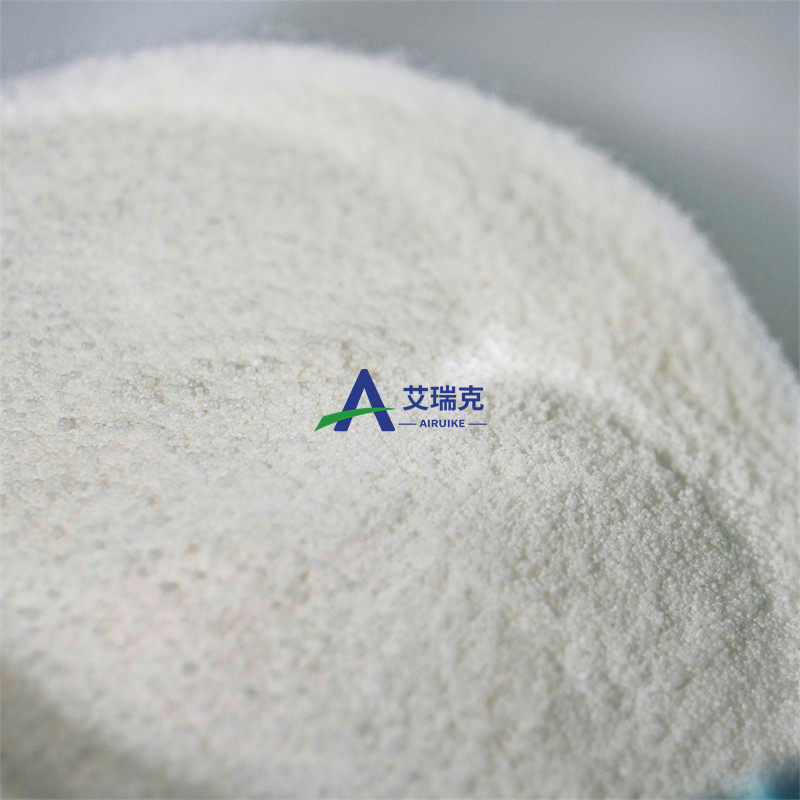The latest development of muscle stem cell research (phase 3)
-
Last Update: 2019-10-29
-
Source: Internet
-
Author: User
Search more information of high quality chemicals, good prices and reliable suppliers, visit
www.echemi.com
On October 29, 2019, myoblasts can be developed and differentiated into myoblasts, which can fuse with each other to form multi-nuclear muscle fibers and form the most basic structure of skeletal muscle Muscle stem cells are present in both human embryos and adults The proliferation of muscle stem cells in embryo and fetus leads to the development of muscle tissue; the muscle stem cells in adult body are also called satellite cells, which are in dormant state and distributed along muscle fibers After intense exercise or external injury, adult muscle stem cells will be activated and start to self proliferate, thus increasing or restoring adult muscle tissue For the elderly, muscle stem cells no longer have the activity of self replication, which shows the atrophy of muscle tissue This paper reviews the progress of muscle stem cell research in recent years for the readers 1 NAT Metab: why does the healing ability of aging muscle cells decrease? Doi: 10.1038/s42255-019-0110-3 a study led by Chen Ming fan, a biologist from Carnegie University, shows that the decline in muscle injury recovery ability is mediated by a protein as people grow older The protein can inhibit the ability of muscle stem cells to differentiate into new muscle tissues The results were published in the recent nature metabolism Image source: Muscle stem cells in skeletal muscle have the powerful ability to make new muscle tissue These cells are not only good at "making" muscle, but also can divide continuously to produce more stem cells This process is called "self renewal" But their related ability will be weakened with the increase of age, which will lead to the decline of regeneration ability after muscle trauma Recently, researchers from Carnegie University have found that a protein called gas1 is responsible for this "Gas1 protein is encoded by a growth inhibition specific gene, which mediates the decline of muscle stem cell function caused by aging," the authors explained They found that the protein was abundantly expressed in all aged muscle stem cells The removal of gas1 from aging muscle stem cells can restore them to a young state, thus supporting strong regeneration ability They also found that gas1 inhibits another cell surface receptor called RET, which is necessary for muscle stem cell renewal Accordingly, the more gas1 protein is, the lower RET function is The inhibitory effect of gas1 on RET can be reversed by a third protein, GDNF, which binds to and activates ret When the researchers injected GDNF directly into the muscles of aging mice, muscle stem cell function and muscle regeneration were restored 2 Mol ther: crispr-cas9 technology can treat Duchenne muscular dystrophy doi: 10.1016/j.ymthe.2019.06.012 Duchenne muscular dystrophy (DMD) is a rare but very serious genetic disease, which can lead to muscle loss and body damage Recently, a study by researchers at the University of Missouri School of Medicine showed that CRISPR, a gene editing technique, can provide a lifelong means to correct gene mutations that cause the disease "Studies based on animal models have shown that CRISPR can be used to correct gene mutations that cause abnormal death of muscle cells," said Dr Dongsheng Duan, senior author of the paper "However, muscle cells that are edited by these genes tend to age over time Therefore, if we can correct the mutation in muscle stem cells, the regenerated muscle cells will no longer carry the mutation " First, the researchers injected gene editing vectors into the muscles of normal mice through AAV9 "We transplanted AAV9 treated muscles into immunodeficient mice The transplanted adult muscle cells will die first, and then regenerate new muscle cells from stem cells If stem cells can be successfully edited, then regenerated muscle cells should also carry the edited genes " The researchers' reasoning is correct because they found a large number of edited cells in regenerated muscle And these cells can produce dystrophin normally 3 Cell Rep: researchers revealed the cause of menopausal muscle atrophy doi: 10.1016/j.celrep.2019.06.025 In a recent article published in cell reports, Dr dawn Lowe, Professor of rehabilitation medicine at the University of Minnesota School of medicine, determined for the first time that estrogen is essential for the maintenance and function of female muscle stem cells This study investigated the ability of muscle regeneration in ovariectomized mice and mice without estrogen receptors in muscle stem cells The study found that the absence of estrogen or estrogen receptor gene in muscle stem cells resulted in a 30% - 60% decrease in the number of muscle stem cells (also known as satellite cells) in five different muscles It is very difficult for living cells to reproduce and generate new muscles after injury The study also included collaboration with Finnish scientists who carried out muscle biopsies in premenopausal and postmenopausal women The results show that the number of satellite cells is closely related to the change of serum estrogen level in human "This is the first study to show that estrogen deficiency affects the number and function of satellite cells," Lowe said Photo source: cell reports Estrogen replacement therapy for menopausal symptoms is known to help maintain muscle health But this hormone replacement therapy for muscle weakness also increases the risk of cancer due to the effects of estrogen on tissues such as the breast and endometrium The team found a new drug that interacts with known estrogen receptors in a way that does not affect breast or endometrial tissue This drug can stimulate estrogen signals in muscle stem cells, so it may prevent the decline of muscle stem cells caused by menopause in aging women This drug treatment will not produce replacement with conventional hormones The risk of substitution therapy is similar 4 Gene dev: new research reveals the "shock" effect of muscle stem cell differentiation doi: 10.1101/gad.322818.118 when muscle is injured, muscle stem cells must be ready to start "action": for example, during sports activities, they have the responsibility to differentiate and generate new muscle cells as soon as possible At the same time, however, the body needs a mechanism to prevent uncontrolled differentiation of stem cells - otherwise the supply of these cells in the muscles will run out quickly According to the team's recent report in the journal genes & development, MyoD and Hes1 proteins regulate the differentiation of muscle stem cells, resulting in periodic fluctuations in the number of cells produced "In our experiments, we first linked Hes1 and MyoD to proteins, which are luminescent - that is, luminescent - proteins, so that we can better track their development," explained lead author Dr Ines Lahmann Then, the team was able to observe that - in isolated cells, muscle tissue and living animals - Hes1 protein, which is part of the Notch signaling pathway, is produced in an oscillatory manner "Production peaked every two to three hours and then dropped again," lahmann reported, and they encountered the same phenomenon in MyoD protein "As long as the number of MyoD in stem cells fluctuates periodically, the cells will grow and divide, thus self renewing." 5 PNAs: cell replacement therapy can be used in the treatment of muscular dystrophy doi: 10.1073/pnas.1808303116 a recent study at the University of Minnesota School of medicine has brought new hope for the use of cell therapy in the treatment of muscular dystrophy In this study, published in the proceedings of the National Academy of Sciences (PNAs), the authors studied in depth how cells produced in vitro can achieve the purpose of muscle regeneration For many years, researchers have taken the lead in vitro to produce muscle stem / progenitor cells from pluripotent stem cells These cells can produce new functional muscles when transplanted into mice with muscular dystrophy Now, researchers have pushed ahead with these results, identifying for the first time the molecular characteristics of muscle stem cells produced in a dish "We have known for a long time that muscle stem cells will develop and produce new muscle cells after transplantation, but the impact on the tissue environment in this process is not clear In this regard, our study understands the specific role of the environment, which is an exciting finding, "the authors said "It is very important to understand the changes of these cells after transplantation at the molecular and functional level, so as to provide theoretical basis for future therapeutic applications." 6 Cell Rep: can muscle stem cells also drive cancer? Doi: 10.1016/j.celrep.2018.12.089 people with Duchenne muscular dystrophy (DMD) sometimes develop a rare type of muscle cancer called rhabdomyosarcoma, which is caused by the continuous efforts of muscle cells to reconstruct damaged tissue However, little is known about how this cancer occurs, which hinders the development of cancer risk prediction, treatment or detection Now, scientists at the Sanford Burnham prebys Institute for medical discovery (SBP) have shown that muscle stem cells may cause rhabdomyosarcoma during DMD and identified two genes related to tumor growth This study using a mouse model of severe DMD will help scientists better understand the development of rhabdomyosarcoma in DMD, and show that the efforts being developed to stimulate muscle stem cell therapy should consider potential cancer risks The study was published in cell reports on January 15, 2019 Photo source: Sanford Burnham prebys medical discovery Institute (SBP) In this study, scientists found that mice with more severe DMD developed rhabdomyosarcomas earlier, suggesting that increased muscle degradation contributed to the development of cancer Next, they isolated several cells involved in muscle regeneration from mice with severe DMD and tested their ability to become tumors Compared with other cells, muscle stem cells have enhanced replication ability (self-renewal) and formed tumors when growing independently Muscle stem cells also show early signs that they will develop into tumors, including increased self-renewal, accumulation of DNA damage and gene expression patterns similar to those seen in human rhabdomyosarcomas Using RNA sequencing, scientists also found two genes related to tumor growth, CCL11 and RGS5, which are related to inflammation and wound healing When scientists added CCL11 and RGS5 proteins to tumor cells, it reduced their growth - suggesting that these genes are involved in cancer growth Cell stem cell: researchers have found drugs that control stem cell differentiation! Stem cell therapy may end muscular dystrophy! Doi: 10.1016/j.stem.2017.12.010 a drug created by UBC researchers may be able to overcome one of the main challenges facing stem cell therapy - stem cells may differentiate into specific tissue cells too early and too fast If the drug works as well as it does in laboratory mice, it may bring stem cell therapy closer to reality UBC and Stanford University researchers are interested in using stem cells to aid muscle tissue regeneration in the treatment of muscular dystrophy, a genetic disease in which the muscles of patients weaken over time Stem cells have the ability to differentiate and produce new tissue
This article is an English version of an article which is originally in the Chinese language on echemi.com and is provided for information purposes only.
This website makes no representation or warranty of any kind, either expressed or implied, as to the accuracy, completeness ownership or reliability of
the article or any translations thereof. If you have any concerns or complaints relating to the article, please send an email, providing a detailed
description of the concern or complaint, to
service@echemi.com. A staff member will contact you within 5 working days. Once verified, infringing content
will be removed immediately.







